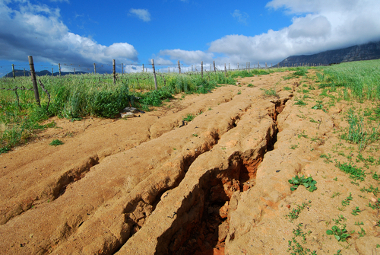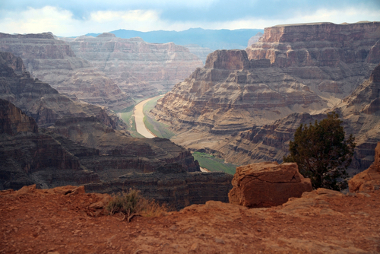THE erosion, as we know, consists of the process of wear, transport and sedimentation of rocks and, mainly, of soils. It can occur by natural processes, which tend to be slower and with less impact, and by anthropic processes, which characterize accelerated erosions. If we look at the image above, we can see that, in extreme cases, the action of this phenomenon can generate major catastrophes both in urban and rural areas.
In terms of classification, there are several types of erosion, which can be listed according to the type of erosive agent acting, such as water, wind and living beings.
Mind Map: Types of Erosion

*To download the mind map in PDF, Click here!
1. Rain erosion: is the type of erosion caused by the action of rainwater. In general, any wear on the soil caused by precipitation can be classified as rain erosion, but in areas where the terrain is less protected by vegetation and other elements, the effects of water action may be more intense senses.
Rainfall erosion can present itself in different ways, as we can see below:
1.1. erosion in splash: is the effect generated by the impact of raindrops on the ground. Apparently simple, this process can cause greater problems if it is intensified by the total or partial breakdown of soil particles and rocks.

Erosion occurrence scheme in splash, with the impact of water on the soil
1.2. laminar erosion: it is when the runoff of rainwater “washes” the soil, that is, removes its surface cover, wearing it out.
1.3. groove erosion: occurs when water flow over soil intensifies its wear to the point of forming small “lines” or cuts in the land. This is generally the principle for the formation of more severe erosions in slope areas.

Erosion formation in furrows
1.4. ravines: it is when rainwater, over time, opens larger cavities along the slope of the land.

Example of the formation of ravines in the relief
2. Fluvial Erosion: it is the wear caused by the bed of rivers both when they exceed and advance over the banks and when the riparian vegetation is removed and unprotects the relief around the watercourses, as shown in figure a follow:

River bed with serious river erosion problems
3. gully: can result from the combination of various types of erosion, forming large craters that usually reach the water table or internal soil structures.

Aerial view of a gully, in the upper portion of the image*
4. marine erosion: occurs when rocks or coastal soil are eroded by water from ocean waves. It is a natural process and becomes a problem when houses or roads are built in areas occasionally occupied by waves.

Marine erosion acting on an asphalt paving area
5. wind erosion: as the name implies, it is the type of erosion caused by the action of the winds, which slowly sculpt the rocks and transport the soil particles.

Example of rocks and landforms shaped by winds
6. glacial erosion: is the type of erosion caused by the action of ice, both snow and glaciers. It usually occurs because temperature variations freeze and thaw water, which expands and compresses, affecting rocks and soils. Other forms of ice movement, such as avalanches, are also involved in this process.
7. gravity erosion: Occurs in mountainous areas with steep slopes. In some cases, when the relief is very steep, the movement of land masses can occur, a phenomenon that can be intensified by the saturation of soils by rainwater.

Gravity erosion action
8. geological erosion: it is also known as natural erosion or that has not suffered human interference. It works by modeling landscapes, with a combination of several other types of erosive actions. An example is the modeling of a valley or a canyon by the waters and by the winds.

Grand Canyon, landscape shaped by the action of erosive agents over time
______________________
* Image credits: René Boulet / embrapa
By Rodolfo Alves Pena
Master in Geography
*Mental Map by Rafaela Sousa
Graduated in Geography
Source: Brazil School - https://brasilescola.uol.com.br/geografia/tipos-erosao.htm
